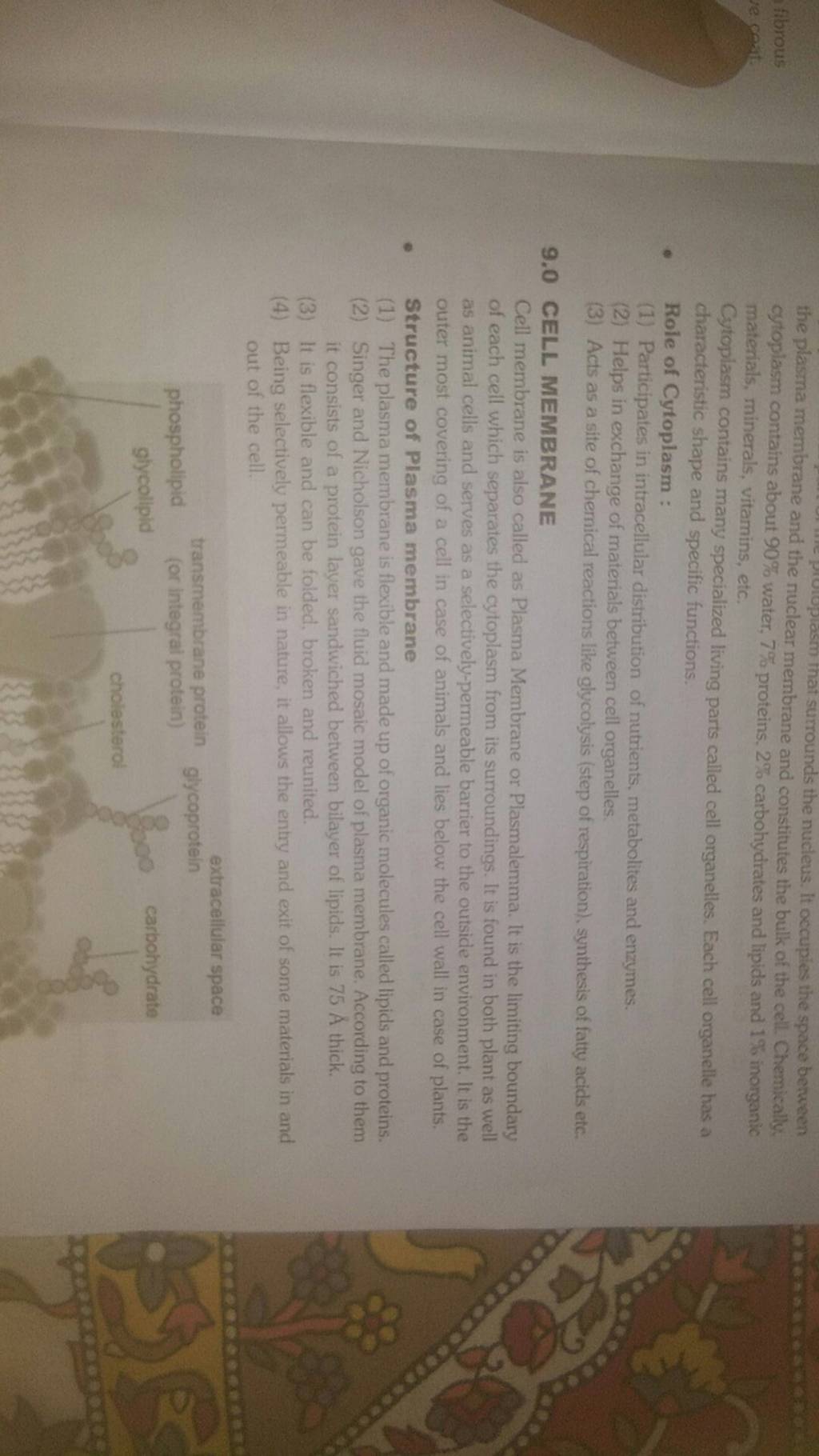Question
Question asked by Filo student

the plasma membrane and the nuclear that surrounds the nucleus. it occuples the space berween cytoplasm contains about water, proteins. corbohydrates and lipids and 19 inorganic materials, minerals, vitamins, etc. Cytoplasm contains many specialized living parts called cell organelles. Each cell organelle has a characteristic shape and specific functions. Role of Cytoplasm :
- Participates in intracellular distribution of nutrients, metabolites and enzymes.
- Helps in exchange of materials between cell organelles.
- Acts as a site of chemical reactions like glycolysis (step of respiration), synthesis of fatty acids etc.
Found 2 tutors discussing this question
Discuss this question LIVE
5 mins ago
Filo tutor solution
Learn from their 1-to-1 discussion with Filo tutors.

Generate FREE solution for this question from our expert tutors in next 60 seconds
Don't let anything interrupt your homework or exam prep with world’s only instant-tutoring, available 24x7
Practice more questions on Biology
Question 1
Views: 5,443
Question 3
Easy
Views: 5,647
Question 4
Easy
Views: 5,386
Reason (R): Pathogens cannot tolerate high temperature.
Students who ask this question also asked
Question 1
Views: 5,913
Question 3
Views: 5,301
Question 4
Views: 5,351
| Question Text | the plasma membrane and the nuclear that surrounds the nucleus. it occuples the space berween cytoplasm contains about water, proteins. corbohydrates and lipids and 19 inorganic materials, minerals, vitamins, etc. Cytoplasm contains many specialized living parts called cell organelles. Each cell organelle has a characteristic shape and specific functions. Role of Cytoplasm : |
| Topic | Biology |
| Subject | Science |
| Class | Class 9 |



